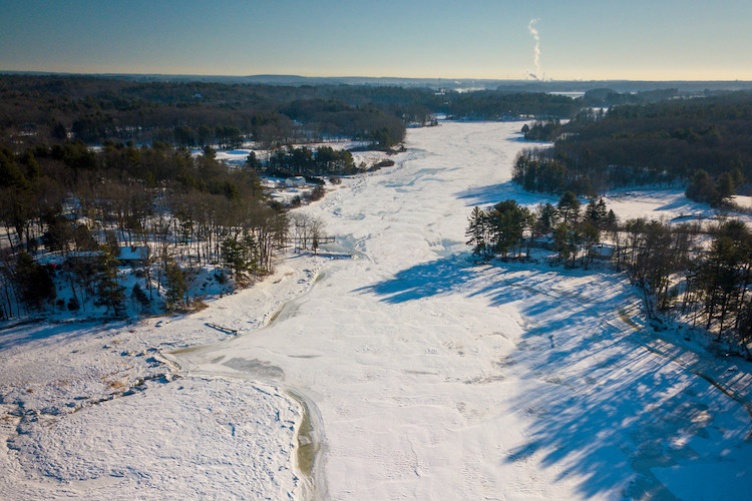

As our climate changes, so does where precipitation falls, whether it’s rain or snow and how it melts. By updating projected snowmelt flooding models, a new study from UNH aims to better understand — and help prepare for — the effects of future floods on infrastructure and vulnerable water resources.
“Estimation of future floods can be a tricky business, yet it is important information for those planning future infrastructure,” says Jennifer Jacobs, professor of civil and environmental engineering and an author of the study, published recently in the journal Geophysical Research Letters. “For instance, if a region primarily has floods occurring during the winter, then this work could really help build infrastructure that can handle those future conditions. And, if the floods are decreasing, then the design values should also decrease rather than over design.”
“Estimation of future floods can be a tricky business, yet it is important information for those planning future infrastructure.”
The study, led by Jacobs’ former Ph.D. student Eunsang Cho ‘20G, found that by the late 21st century snowmelt could decrease over the continental U.S. and southern Canada but increase in Alaska and northern Canada. In California and the Pacific Northwest, there is a predicted increase in runoff despite a decrease in snowmelt. These projected changes, say the researchers, could trigger larger flooding vulnerabilities that cause major societal and economic consequences, including costly infrastructure failures. Their findings could be helpful for water resources managers, engineering designers and the general public in Northern California, the Pacific Northwest, Alaska and Canada.
Examining historical maps, regional climate model simulations and previous studies, the researchers found that in the West Coast mountain areas, such as Northern California and the Pacific Northwest, there could be greater risk of rain-on-snow flooding because these areas are predicted to warm and produce more rain. This could increase the melting of any existing snowpack and lead to larger runoff potential, increasing flooding risk. But this differed in extreme cold regions like Alaska and northern Canada, where warmer temperatures could increase the opportunity for moisture that could likely lead to more winter precipitation like snow.
“These findings can be important in helping to develop or modify federal and state governments’ long-term policies for climate adaptation,” says Cho, now postdoctoral researcher at NASA’s Goddard Space Flight Center. “For example, the current U.S. government standards for water-related infrastructure design are based on liquid precipitation data with very limited guidance on snow or snowmelt information.”
The researchers point out that certain infrastructure policies, such as the relicensing of dams, depend on information about extreme weather conditions. This information can help engineers design infrastructure not based on past conditions but to anticipate future conditions. In their previous research, Jacobs and Cho created a map that accounts for snowmelt across the continental U.S. They say this information is already being used by the state of California in their relicensing process.
Rachel McCrary, project scientist at the National Center for Atmospheric Research, also contributed to this study. This research was funded by NASA’s Applied Sciences Water Resources Program (grant numbers NNX15AC47G and NNX16AN34G) and the U.S. Department of Energy’s Office of Biological and Environmental Research program (grant numbers DE-SC0016605 and DE-SC0016438).
-
Written By:
Robbin Ray ’82 | UNH Marketing | robbin.ray@unh.edu | 603-862-4864

















































